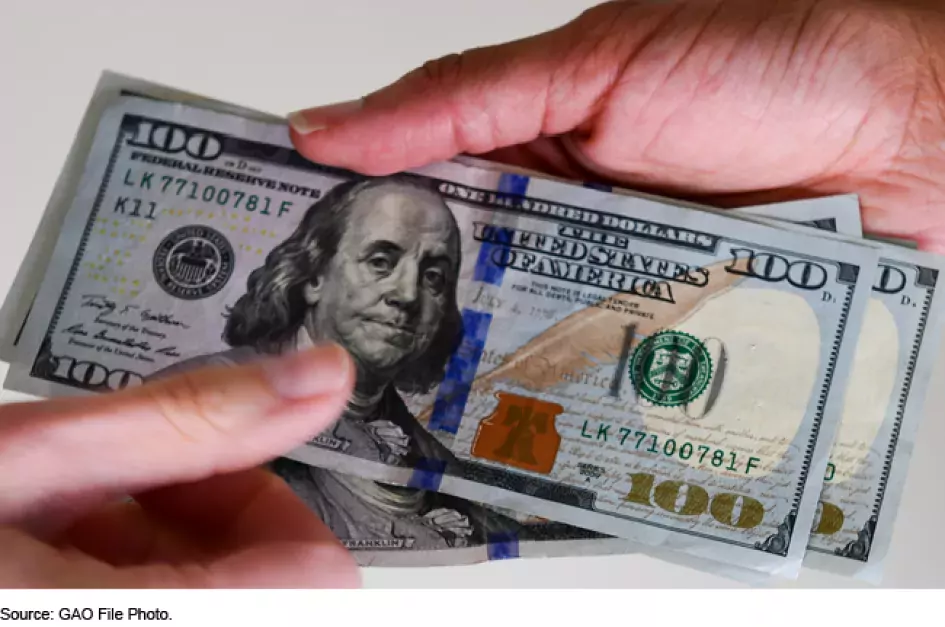Protecting Emergency Assistance Funding from Payment Errors, Including Fraud
Federal emergency assistance is a critical resource for helping communities, businesses, and individuals respond to and recover from natural disasters, public health emergencies, and more. But over the last 20 years the federal government has made nearly $2.4 trillion in payment errors for both emergency and nonemergency programs, wasting important resources and undermining the credibility of federal efforts. What can be done to better protect federal emergency assistance from payment errors, including fraud?
Today’s WatchBlog post looks at some examples of payment errors, including fraud, in emergency assistance funding, as well as our new guide to help Congress and federal agencies prevent and reduce them.
Image

How do these errors happen?
When the federal government provides emergency assistance, the risk of payment errors may increase because the need to provide this assistance quickly can lead agencies to relax or forego implementation of effective safeguards. For example, the COVID-19 pandemic saw an increase in the frequency and volume of identity-related fraud, particularly in the areas of unemployment insurance and assistance to small businesses. Specifically:
- While more than $1.1 trillion in COVID-19-related small business assistance helped many people, two of the Small Business Administration’s key programs reported an estimated $35.9 billion in payment errors in FY 2022 alone. SBA’s oversight plans weren’t finalized before funds had to be disbursed, and the agency had few safeguards in place.
Listen to our recent podcast with GAO’s Johana Ayers to learn more about our work on fraud in small business COVID-19 relief programs.
- States received more than 42 million unemployment insurance claims from March 21 to May 30, 2020, compared with 5.1 million in all of FY 2019. While this insurance assisted many workers, payment errors may have accounted for at least $191 billion of the $888 billion disbursed during the pandemic, according to Department of Labor auditors.
What can be done about it?
Today, we issued a new guide to help Congress and federal agencies prevent and reduce payment errors, including fraud, in emergency assistance programs.
“This important new tool is designed to help federal agencies improve their response to the growing threat posed by emergencies, such as natural disasters and public health crises,” said Gene L. Dodaro, Comptroller General of the United States and head of the GAO. “The federal government has provided billions of dollars to communities recovering from emergencies, and must strategically manage the risk of payment errors and fraud. This will help ensure federal emergency funds get to the people and businesses that need them.”
Our new guide provides five principles and corresponding practices that can help Congress and federal program managers mitigate payment errors, particularly in emergency assistance programs. They are:
- Commit to managing payment errors
- Identify and assess payment error risks, including fraud
- Design and implement effective control activities
- Monitor the effectiveness of controls in managing payment errors
- Provide and obtain information to manage payment errors
By applying these principles, federal agencies will be better prepared to respond to emergencies while ensuring that federal dollars are spent effectively and reach those in need.
- Comments on GAO’s WatchBlog? Contact blog@gao.gov.
GAO Contacts
Related Products

GAO's mission is to provide Congress with fact-based, nonpartisan information that can help improve federal government performance and ensure accountability for the benefit of the American people. GAO launched its WatchBlog in January, 2014, as part of its continuing effort to reach its audiences—Congress and the American people—where they are currently looking for information.
The blog format allows GAO to provide a little more context about its work than it can offer on its other social media platforms. Posts will tie GAO work to current events and the news; show how GAO’s work is affecting agencies or legislation; highlight reports, testimonies, and issue areas where GAO does work; and provide information about GAO itself, among other things.
Please send any feedback on GAO's WatchBlog to blog@gao.gov.




